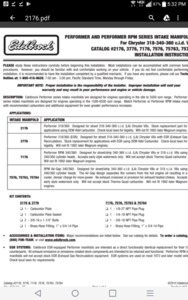OK as a technical person I like to define all possible causes of an issue to make sure I don't rule out anything.
I unfortunately hydro-locked the engine after its first start in "many" years. Car ran for 1 minute max. I put a new manifold on the car and carb as the old manifold was literately rotted. Cars past was unknown but after old manifold was pulled all looked good! See pic#1
Picture#2 New Gasket prior to manifold bolt down.
Pictures #3 & #4 show water in all the cylinders.
So my question is what could cause this? Could one head gasket point of failure cause all cylinders to get fouled up? There looks to be possible head gasket issues on both sides but its iffy to me.....
I see differences now with the new gasket. I am not familiar with the waterways on the manifold/engine. Is there an obvious gotcha here? Did I make a fatal cockpit error? The gasket I used was Mr. Gasket #5840 which I double checked is the right one!
Before engine start and new manifold:

New manifold gasket:

Drivers side after engine start:

Passenger side after start up:

I unfortunately hydro-locked the engine after its first start in "many" years. Car ran for 1 minute max. I put a new manifold on the car and carb as the old manifold was literately rotted. Cars past was unknown but after old manifold was pulled all looked good! See pic#1
Picture#2 New Gasket prior to manifold bolt down.
Pictures #3 & #4 show water in all the cylinders.
So my question is what could cause this? Could one head gasket point of failure cause all cylinders to get fouled up? There looks to be possible head gasket issues on both sides but its iffy to me.....
I see differences now with the new gasket. I am not familiar with the waterways on the manifold/engine. Is there an obvious gotcha here? Did I make a fatal cockpit error? The gasket I used was Mr. Gasket #5840 which I double checked is the right one!
Before engine start and new manifold:
New manifold gasket:
Drivers side after engine start:
Passenger side after start up:

















